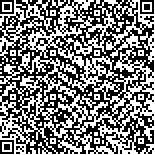下载中心
优秀审稿专家
优秀论文
相关链接
摘要

在卫星海洋遥感中,云作为海气耦合系统最重要的调节器之一,其检测结果对海洋上空云微物理特性的反演精度有较大影响。因此,快速而准确识别海洋上空的云像元是卫星遥感数据处理过程中首要解决的关键问题。以PARASOL (Polarization and Anisotropy of Reflectances for Atmospheric Sciences coupled with Observations from a Lidar)卫星搭载的POLDER3载荷遥感数据为研究对象,提出一种改进的海洋上空云检测方法。首先剔除海洋耀光;接着利用有云与晴空区近红外反射率差异检验识别有云像元,并利用偏振反射率检验进一步识别低反射率的云像元;然后利用近红外与可见光反射率比值检验识别晴空像元;最后建立多角度云检测结果空间融合规则,重新标记有云、晴空和未定像元。以印度洋海区为例进行实验分析,将云检测结果与Buriez方法进行对比,发现检测精度基本相当,而有云像元的识别速度却平均提高约3倍。结果表明:该方法能有效的检测出海洋上空的云像元,满足业务化数据处理的高精度及时效性要求,为后续云微物理特性反演提供可靠的数据源。
Clouds are important regulators of the ocean-atmosphere coupling system in ocean satellite remote sensing. The results of cloud detection have a significant influence on the retrieval accuracy of cloud microphysical properties over the ocean. Therefore, achieving cloud detection over the ocean and determining methods to improve the processing speed of operational algorithm and the precision of cloud pixel recognition for polarized sensors are urgent concerns.
This work proposes an Improved Cloud Detection (ICD) algorithm over the ocean according to operational cloud detection problems in satellite polarized sensor data. A series of continuous processes and tests is used to identify the clear-sky and pixel-by-pixel cloudy area using the data of Polarization and Directionality of Earth's Reflectances (POLDER3). Such data are loaded by Polarization and Anisotropy of Reflectances for Atmospheric Sciences coupled with Observations from a LiDAR (PARASOL) satellite. The pixels are divided into ocean and land parts. Then, the ocean glint pixels are eliminated via the glint angle computing formula and the empirical threshold (see MODIS 40 degrees). Thereafter, the cloudy pixels are identified using the characteristic difference of near-infrared reflectance between cloud and clear-sky regions. Cloudy pixels with low reflectance are also further recognized using a polarized reflectance test according to the polarized sensitive characteristics of cloud particles. Next, the clear-sky pixels are identified by the reflectance ratio test between near-infrared and visible light. Finally, the spatial registration rule is created with multi-angle cloud detecting results, and all pixels are relabeled to cloudy, clear-sky, and undetermined pixels with this rule.
The Indian Ocean is used as an example for experimental analysis. The results of improved cloud detection are compared with those of the Buriez method. The detection accuracy is very close to the Buriez algorithm but is more time-efficient. In the case of clear-sky pixels, the recognition rates of ICD and of the Buriez algorithm are approximately 30. For cloudy pixels, the recognition rate of ICD is approximately 47%. The error range of cloudy and undetermined pixels is approximately 1% compared with the Buriez algorithm. Furthermore, the efficiency of our cloud detection algorithm greatly improved. The data processing speed is improved approximately three times without considering the time consumption of external data acquisition.
Results show that the algorithm is highly effective in achieving high-precision results of cloud detection. At the same time, the processing time of cloudy pixels is significantly reduced, and the operational speed of cloud-detecting products is considerably improved. This algorithm can provide real-time and accurate products for the inversion of atmosphere and ocean parameters to meet the high-precision and -efficiency requirements of operational processing in satellite ground systems. This algorithm is also dominant in the cloud detection process for Directional Polarimetric Camera (DPC) in the GF-5 satellite which is planned for launch in 2017.

